
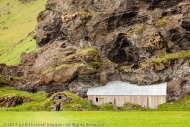
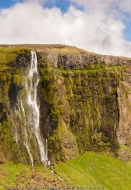
Go to the desert, and chances are you’re going to see a lot of cactus. The only question is what kind, and that depends on where you are. Last month I drove to southern Arizona to see what I could find.
As I said in last week’s post, Arizona Road Trip!, my primary objective for this trip was to catch some wildflowers at their peak, but after driving all that distance, I wasn’t going to ignore the cactus.
So after the wildflowers wore me out, I headed south and west to the Tucson area. This is the edge of the Sonoran Desert, which runs from southern California through the southwestern quarter of Arizona and down into Mexico. It is the hottest desert in North America.
To see the cactus at their best, I decided to visit the Saguaro (suh-WAR-oh) National Park. The park is divided into two sections, one on either side of Tucson, and is home to, you guessed it, a whole bunch of Saguaro Cactus (Carnegiea gigantea).
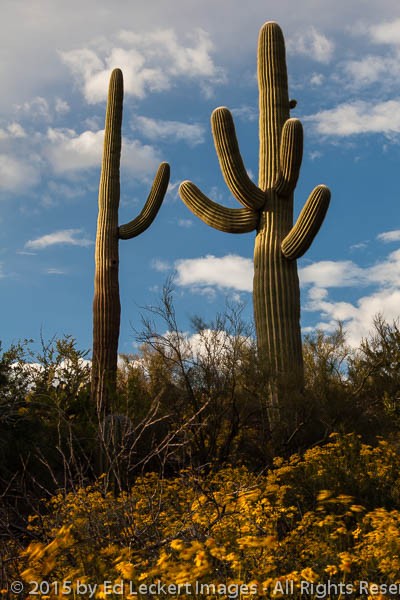
Saguaro Cactus appear ready to embrace each other as they glow near a field of Brittlebush, in Saguaro National Park, Arizona.
Note the “gigantea” in the Latin name, and these guys can certainly get big. It’s thought they can get up into the 70 ft. (20 m.) tall range, but the largest known currently is over 45 ft. (almost 14 m.) tall in Maricopa County, Arizona. The girth on this big guy is 10 ft. (3.1 m.).
The saguaro may live for over 150 years, and may not grow side arms until more than 75 years old. When they do, it’s to make them look cool. No, actually, since they only bloom on the end of their arms, the more arms they have the more blooms they can have, and therefore more fruit and more chance to reproduce.
The flowers bloom at night, and are white to yellow. Because the saguaro blooms at night, bats are one of the primary pollinators. The nectar is very rich, the flowers are sturdy, and so this works out well for both the cactus and the bats. But there are many diurnal visitors as well, including honey bees and all sorts of birds.
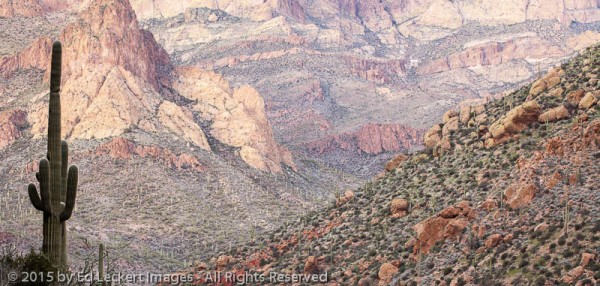
A saguaro cactus stands tall over the valley along the Apache Trail, in Tonto National Forest, Arizona.
The ruby-red fruit typically ripens in June, and if you like seeds, you’re in luck, as each fruit has about 2000 of them! But they are certainly edible, and the sweet fleshy tissue is a local favorite.
All sorts of birds live in hollowed out pockets inside the saguaro. The nests are way off the ground and provide excellent protection from ground dwelling predators.
Another common cactus in this area is the barrel cactus. These guys don’t branch like the saguaro, but they look like their shorter, stouter cousins. They start off looking like little fuzzy balls on the ground and then grow into taller columns as they age. They always face the south to prevent sunburn, believe it or not, and so are often called the “compass cactus”. As they get taller and lean more towards the sun, it’s not uncommon for them to completely fall down. Game over!
Be careful around barrel cactus. Stick yourself with one of the spines and you may need antibiotics before it’s finished with you – several months later.
The prickly pear is well known, but did you know the Mexican natives used it to produce colonche, a fermented alcoholic drink? It can also be used in dye production, earthen wall building, and the flesh can even be used to purify water. The fruit is edible, but most folks find that removing the sharp spines first is critical to their enjoyment.
And finally, we come to the cholla cactus, arguably the most fun of them all. One is called the “teddy-bear cholla” because it looks so cuddly, and another is called “jumping cholla“, but what they have in common is their nasty, barbed spines. Get one of these in your skin and you’ll wish you had stayed home on the couch.
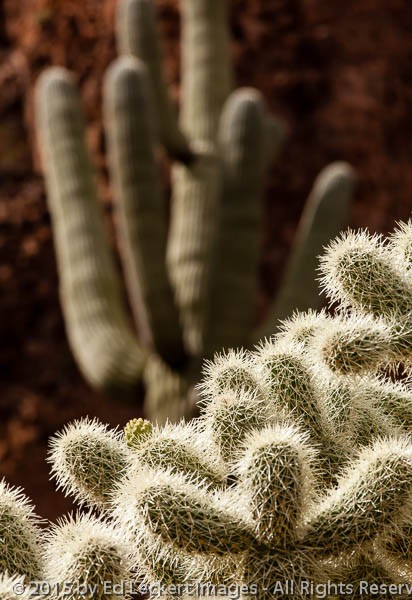
A cholla cactus glows in the afternoon sun as a saguaro cactus towers over it in the background, at Tonto National Monument, Arizona.
To truly appreciate how much fun they can be, check out this Cholla cactus attacks video one unfortunate soul made to warn about their dangers.
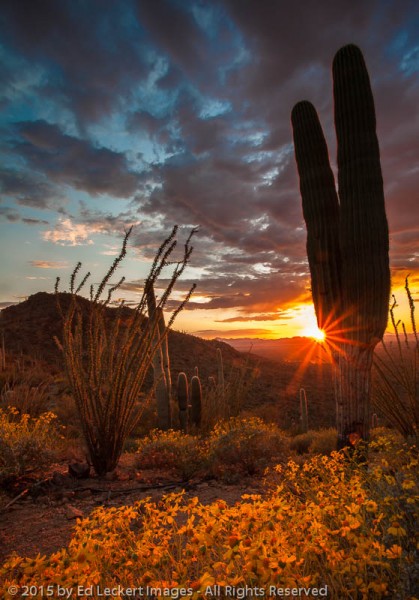
Saguaro Cactus, brittlebrush, and ocotillo glow in the last rays of the day, in Saguaro National Park, Arizona.
Well, that’s enough about cactus for now. Be sure to check back next week when I’ll be talking about, uh, I haven’t the faintest idea. It’ll be a surprise for me as well!

Enjoyed the photo show last night!
Fabulous “Glow” image.